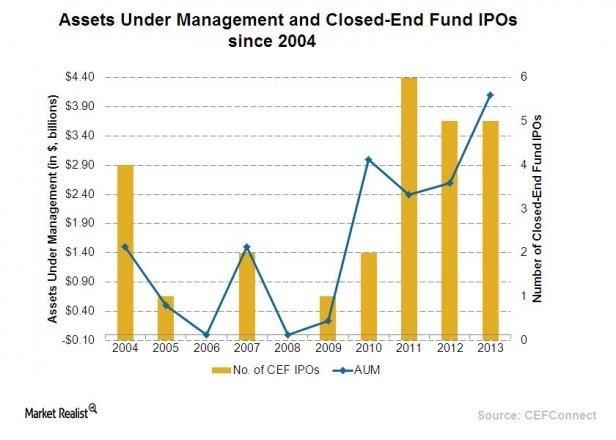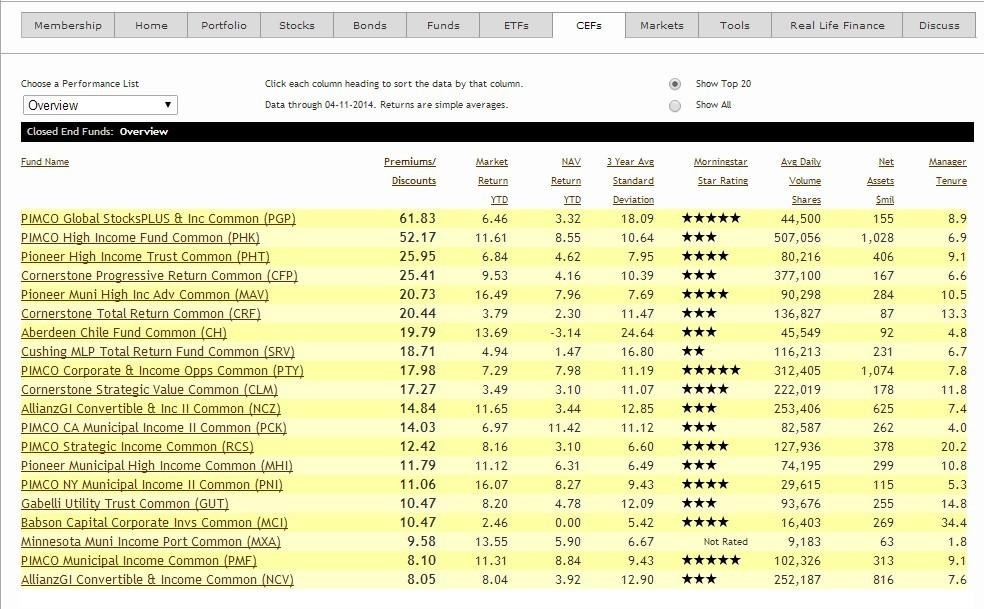5 Keys to Trading ClosedEnd Funds
Post on: 24 Июнь, 2015 No Comment

Savvy investors can take advantage of these niche products
5 Keys to Trading Closed-End Funds
Everyone knows about traditional, open-end mutual funds. Yet when it comes to trading vehicles, what many don’t realize is that closed-end funds often offer better opportunities to profit than either open-end funds or ETFs. Because open-end funds always sell at their NAV (net asset value), you can never buy or sell them at a discount or premium to NAV. With closed-end funds, you can trade them at either a premium or a discount to their NAV.
This closed-end fund arbitrage opportunity gives investors a couple of distinct advantages, and this is why I prefer trading closed-end funds to open-end mutual funds. Let’s take a look at how this works.
1) Super Dividends
Closed-end funds offer something I call “super-dividends.” You see, when closed-end funds sell at a discount to NAV, you earn a higher yield than if you owned the individual securities in the fund. Here’s an example. Suppose you own a hundred 10-year Treasury bonds priced at 100 (par) and yielding 5%. On your $100,000 investment, you receive $5,000 a year in income from your T-bond portfolio.
However, suppose there is a closed-end bond fund that invests in 10-year Treasury bonds. Its NAV is $10 a share, but you can buy it for $9.00 on the market today. If you invest $100,000 in this fund, you could own 11,111.11 shares, and you would receive $5,555.55 a year in income. By buying the closed-end income fund instead of the individual T-bonds, you earn 11% more income!
2) The Power of Leverage
Many closed-end funds also leverage their returns with borrowed money, something that open-ended funds aren’t able to do. As a result, high-yielding “junk” bonds may be yielding 10%, but a closed-end fund using leverage (typically 30% of the fund is borrowed) can earn 13% or more.
Leverage is a great deal for investors when interest rates are low, as they have been lately. Closed-end funds borrow short term (at 1-2%) and buy higher yielding, long-term bonds (at 4-10%, depending on the bond). But beware — when interest rates start to climb, these closed-end funds can lose money quickly and you need to be prepared to sell.
3) More Capital Gains
Deeply discounted closed-end funds offer better opportunities to earn capital gains than open-end funds. If a closed-end fund is selling at a deep discount, it usually means that a particular market sector is in a bear market and out of favor with investors. The investors have lost faith in the fund and have moved to another investment. This is often the case after a long rise in interest rates. When the market turns around, both the open-end fund and the closed-end fund will increase in value, but the closed-end fund will tend to rise faster because the discount will gradually disappear.
4) Things to Keep in Mind
I always like to buy closed-end funds at a discount. What kind of discount? I consider a 5% discount a “good deal,” a 10% discount a “bargain” and a 15% or more discount as a “super bargain.” It is difficult to determine in the future how deep the discount will go, so you just have to sense the intensity of the public mood and the marketplace.

I also try to avoid closed-end income funds selling at a premium. Although you might be tempted to buy a closed-end income fund solely because of its high yield, it can be risky to buy such a fund for income only because the fund’s price may be overvalued and selling far above its NAV. It’s better to wait patiently for the fund’s price to decline to below its NAV, when few investors want it, and then you are likely to earn high income and potential capital gains.
5) Do NOT Buy New Issues of Closed-End Funds
Typically, closed-end funds come out at $10 a share (sometimes $15). Brokers entice customers to buy these funds because there is “no commission” on new issues. What they don’t tell you is that the commission is built into the initial offering price of $10. The commission is paid by the investment company, and it’s substantially more than the regular commission on funds sold on the stock exchange. Stock brokers have an incentive to promote new, closed-end funds.
The second reason for not buying a new, closed-end fund is that, in most cases, the fund inevitably falls below its NAV after it starts trading on the stock exchange. Why not wait and buy the fund when it’s selling for less than its NAV?
The Advantages Outweigh the Disadvantages
Closed-end funds trade on the stock exchange, which means that there are some disadvantages to trading them vs. open-end funds. With closed-end funds you have to be concerned about commissions, the bid-ask spread, and liquidity. In a bear market, it may not be possible to unload your entire position in one day. It may require you to spread out your selling over several days or weeks.
Despite these minor disadvantages, I think the aforementioned advantages of trading closed-end funds far outweigh any downside. Put these closed-end trading practices in place, and you’ll be equipped with a great new way to make trading profits.














